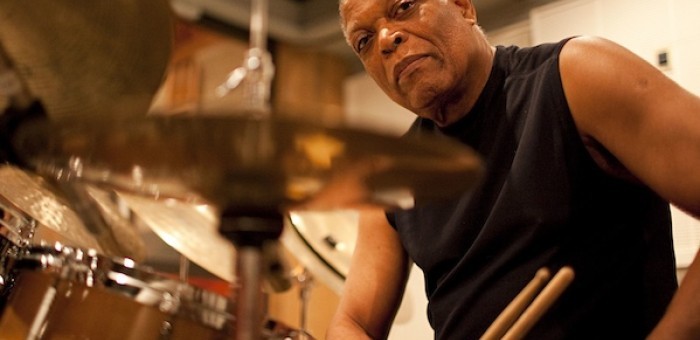Oct 28, 2025 10:47 AM
In Memoriam: Jack DeJohnette, 1942–2025
Jack DeJohnette, a bold and resourceful drummer and NEA Jazz Master who forged a unique vocabulary on the kit over his…

Billy Hart was spotlighted at the Healdsburg Jazz Festival June 4–5.
(Photo: John Rogers/ECM)Two hallmarks of a great jazz festival are unique programming and a deep history. The 18th Annual Healdsburg Jazz Festival (HJF) in Northern California’s Wine Country drew on the latter when presenting the former during its opening weekend on June 4–5.
Billy Hart had participated in 11 of the 17 prior festivals—the most of any artist. HJF founder and Executive/Artistic Director Jessica Felix honored the drummer by programming him as a leader for the first time in HJF history. Hart made the most of the opportunity, performing with four ensembles over two nights.
With the aid of an NEA grant, Felix and Hart curated an impressively all-star roster consisting each night of both one of his current quartets and the live re-creation of one of his classic albums. The list of saxophonists alone was staggering, with Dave Liebman, Craig Handy, Mark Turner, Joshua Redman and Chris Potter all playing on the Jackson Theater stage at the Sonoma Country Day School in Santa Rosa.
When Felix introduced Hart’s de facto residency on June 4, she revealed that this was her favorite booking in her 30 years of presenting concerts. When KPFA DJ Horace Mansfield took on emcee duties, he pointed out that the Quest collective was founded in the early ’80s with Liebman, pianist Richie Beirach, double bassist George Mraz and drummer Al Foster. The current version, with Hart and double bassist Ron McClure, has been active since the mid-’80s.
Liebman’s long declarative tenor lines introduced set opener “Pendulum,” one of Beirach’s signature pieces. The composer took an extended explorative solo full of thick yet flowing chords followed by a brief, elastic McClure showcase.
Prior to the band playing his “Tender Mercies,” Liebman took time to praise Hart, aka Jabali. He reminded the audience that the word Jabali is Swahili for “wisdom” and noted that his friend can discuss everything from drums to spirituality to philosophy. Before trading the microphone for his soprano saxophone, he shared two points—that Hart has shown he can play with everyone from students to Miles Davis and that he is a storyteller at the drum kit.
As if to illustrate his bandmate’s points, Hart laid out a melodic solo alternating between mallets and kick drum that perfectly concluded the piece. Following Beirach’s locked-in “Testament,” which was described as a modern classical-style number, the four musical comrades offered a whirling take on Wayne Shorter’s “Paraphernalia.” (Hart explained that the musicians had just finished recording a tribute album to Davis’ second great quintet, with which the trumpeter recorded the original “Paraphernalia” in 1968.)
“Elm,” another one of Beirach’s best-known compositions, closed the set with Liebman starting on soprano, firing off an impassioned solo on wooden recorder and then ending on tenor as the rhythm section provided alternately tranquil and rowdy accompaniment culminating in some of Hart’s most powerful playing of the night.
Enchance, which was recorded and released in 1977, featured trumpeters Eddie Henderson and Marvin “Hannibal” Peterson, saxophonists Oliver Lake and Dewey Redman, pianist Don Pullen and bassists Dave Holland or Buster Williams and percussionist Thabo Michael Carvin on two tracks.
Henderson, Lake and Holland were on the bandstand for this very special one-time performance, with Craig Taborn sitting in for the late Pullen and Joshua Redman in place of his late father.
The title for the album came in a dream, Hart explained. The Enchance sextet performed five of the album’s seven numbers, starting with the unpredictable “Corner Culture” and its various furious solos. “Diff Customs” began with a unified horn front line before each member soloed, sometimes playing as duos (Holland and Henderson, then Holland and Hart) or a trio (Redman, Holland and Hart).
The next two pieces started with a cappella showcases: Holland did an extended introduction to his own “Shadow Dance,” which would later feature a searching solo by Henderson and an times whimsical one by Taborn. The pianist himself executed a thorough unaccompanied prelude to Hart’s “Layla-Joy.”
Pullen’s “Pharoah” ended night one with Lake stretching out on alto and Henderson and Redman both intently seeking musical wisdom with their instruments. After Holland and Hart playfully brought the set to a close, the bandleader got on the microphone to acknowledge that it had been “a dream come true, all because of you, Jessica angel.”

Jack DeJohnette boasted a musical resume that was as long as it was fearsome.
Oct 28, 2025 10:47 AM
Jack DeJohnette, a bold and resourceful drummer and NEA Jazz Master who forged a unique vocabulary on the kit over his…

D’Angelo achieved commercial and critical success experimenting with a fusion of jazz, funk, soul, R&B and hip-hop.
Oct 14, 2025 1:47 PM
D’Angelo, a Grammy-winning R&B and neo-soul singer, guitarist and pianist who exerted a profound influence on 21st…

To see the complete list of nominations for the 2026 Grammy Awards, go to grammy.com.
Nov 11, 2025 12:35 PM
The nominations for the 2026 Grammy Awards are in, with plenty to smile about for the worlds of jazz, blues and beyond.…

Jim McNeely’s singular body of work had a profound and lasting influence on many of today’s top jazz composers in the U.S. and in Europe.
Oct 7, 2025 3:40 PM
Pianist Jim McNeely, one of the most distinguished large ensemble jazz composers of his generation, died Sept. 26 at…

Drummond was cherished by generations of mainstream jazz listeners and bandleaders for his authoritative tonal presence, a defining quality of his style most apparent when he played his instrument unamplified.
Nov 4, 2025 11:39 AM
Ray Drummond, a first-call bassist who appeared on hundreds of albums as a sideman for some of the top names in jazz…






